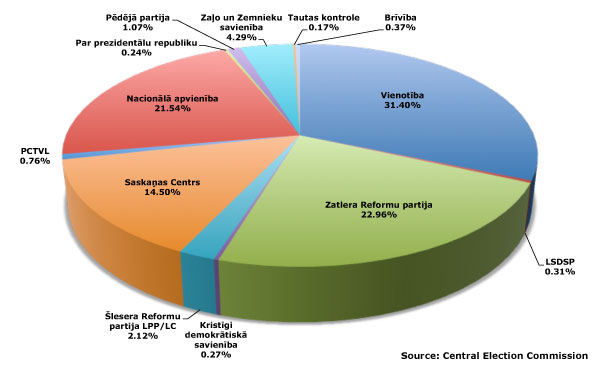The last polling station to report its results in the Sept. 17 parliamentary election will add 125 votes to the totals when officials in Seattle, Wash., complete required paperwork.
Inta Morusa-Vīste (Wiest), chairperson of the local election commission, told Latvians Online that the polling station counted ballots after voting ended at 8 p.m. local time. However, she said Central Election Commission officials in Rīga declined to accept the results until all required forms were submitted, too.
The polling station in the western U.S. city is the only one of 1,027 districts in Latvia and abroad from which the Central Election Commission had not yet published official results by the afternoon of Sept. 18.
Of the 125 voters in Seattle, 43 submitted ballots for Unity (Vienotība), Morusa-Vīste said. The Zatlers’ Reform Party (Zatlera Reformu partija) received 36 votes, as did the National Association (Nacionālā apvienība “Visu Latvijai!”-“Tēvzemei un Brīvībai/LNNK”).
Harmony Centre (Saskaņas Centrs), the party that won the election in Latvia, earned only 4 votes in Seattle. The Union of Greens and Farmers (Zaļo un Zemnieku savienība) got 3 votes. One vote each went to the Šlesers’ Reform Party (Šlesera Reformu partija LPP/LC), the Last Party (Pēdējā partija) and Freedom (Brīvība. Brīvs no bailēm, naida un dusmām).
Official provisional results of the Saeima election are available from the Central Election Commission’s website, www.velesanas2011.cvk.lv.




